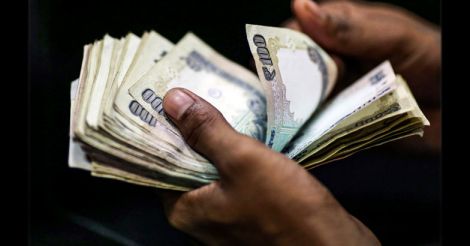The State Bank of India has grown to be a giant with a more than 25 percent share of the Indian banking sector after the takeover of associated banks. The bank was expected to save from the merger and pass on the savings to customers by cutting service rates and increasing interest rates on deposits. On the contrary, the bank has increased service rates across the board, raised the minimum balance amount for individual accounts and imposed fines for any shortcomings. Of course, they have pulled back a little after a broad-based protest. There is no guarantee that the bank would not raise the fees and the fines in future. This could encourage other public sector banks to follow suit.
The State Bank offers 4 percent interest on savings accounts with at least Rs 1 crore and 3.5 percent on accounts with less money. The discrimination is present in fixed deposits too. In short, we have a system that compartmentalizes customers and offers higher interest to the rich with more bargaining power.
Our banks operated profitably even without these horrid conditions, fees and fines. Indian banks survived the global financial crisis of 2008 without any such conditions and high service fees. The interest on loans and other income were sufficient to make a profit after paying for all expenses. Those days, the banks had little bad assets.
The public sector banks had non-performing assets of 2.3 percent in 2008, lower than the 2.5 percent rate in private sector banks. However, the public sector banks are struggling with sour loans of 11.82 percent in 2017.
Bad loans in the entire banking sector in India has jumped from Rs 50,000 crore in 2008 to Rs 8 lakh in 2017. This does not include the loans which had to be restructured to save them from turning sour.
Non-performing assets do not contribute any income. In fact, they demand the banks to set aside money from other sources as provision for loan losses. Maybe the State Bank was trying to cover up for its bad loans by increasing fees on services.
The bank has to reclaim about Rs 1.5 lakh crores from just 20 borrowers. If the banks are unable to get the big defaulters to pay up, they should not target ordinary account holders. They should take quick action to get their money back from the defaulters. They could also issue new loans with prudence to open up new streams of income.
The private sector banks can never replace public sector banks because they demand higher service fees and deposits. A day will come when the public sector banks rue the day when they elbowed out their loyal small-time customers. The big guns would have sought greener pastures.
Let the big bank with a tiny man in its symbol and the others reduce their service fees and deposit limits. The common man deserves better treatment from Indian banks.
(The writer has served as the chairman of the Union Bank of India, Corporation Bank and the South Indian Bank)
Read: Latest Columns | Arts in politics: What if the minister shakes a leg?

























